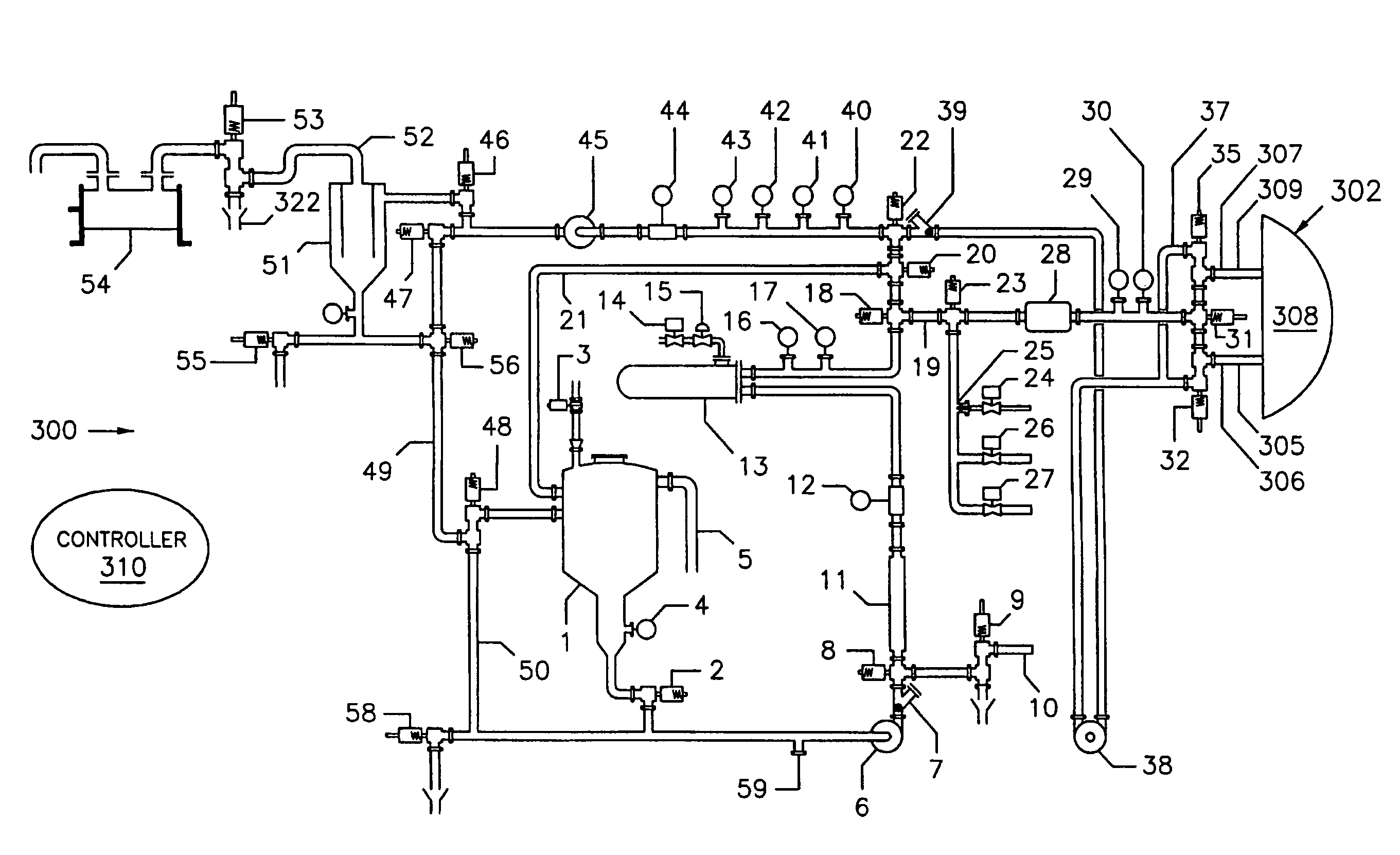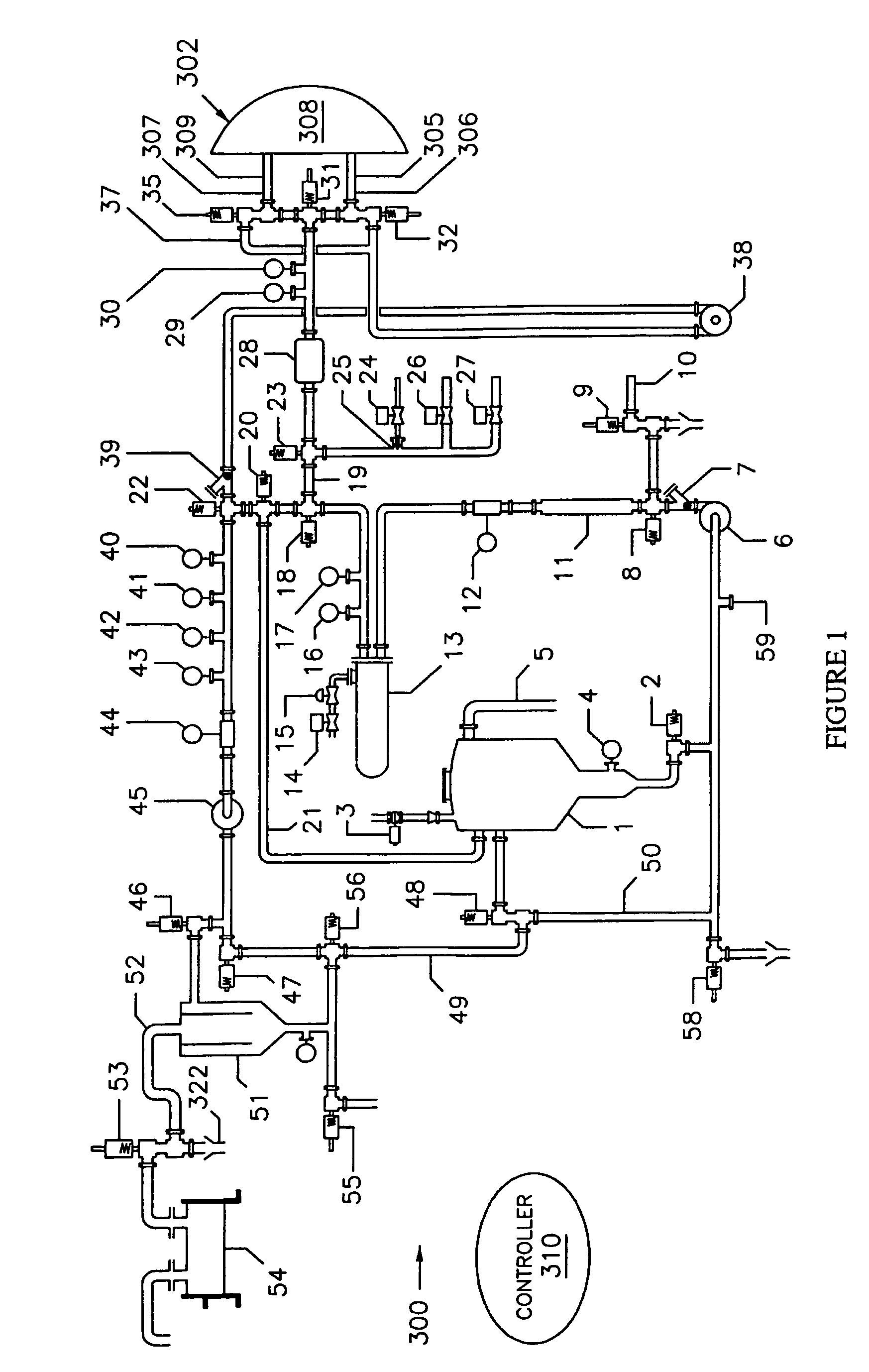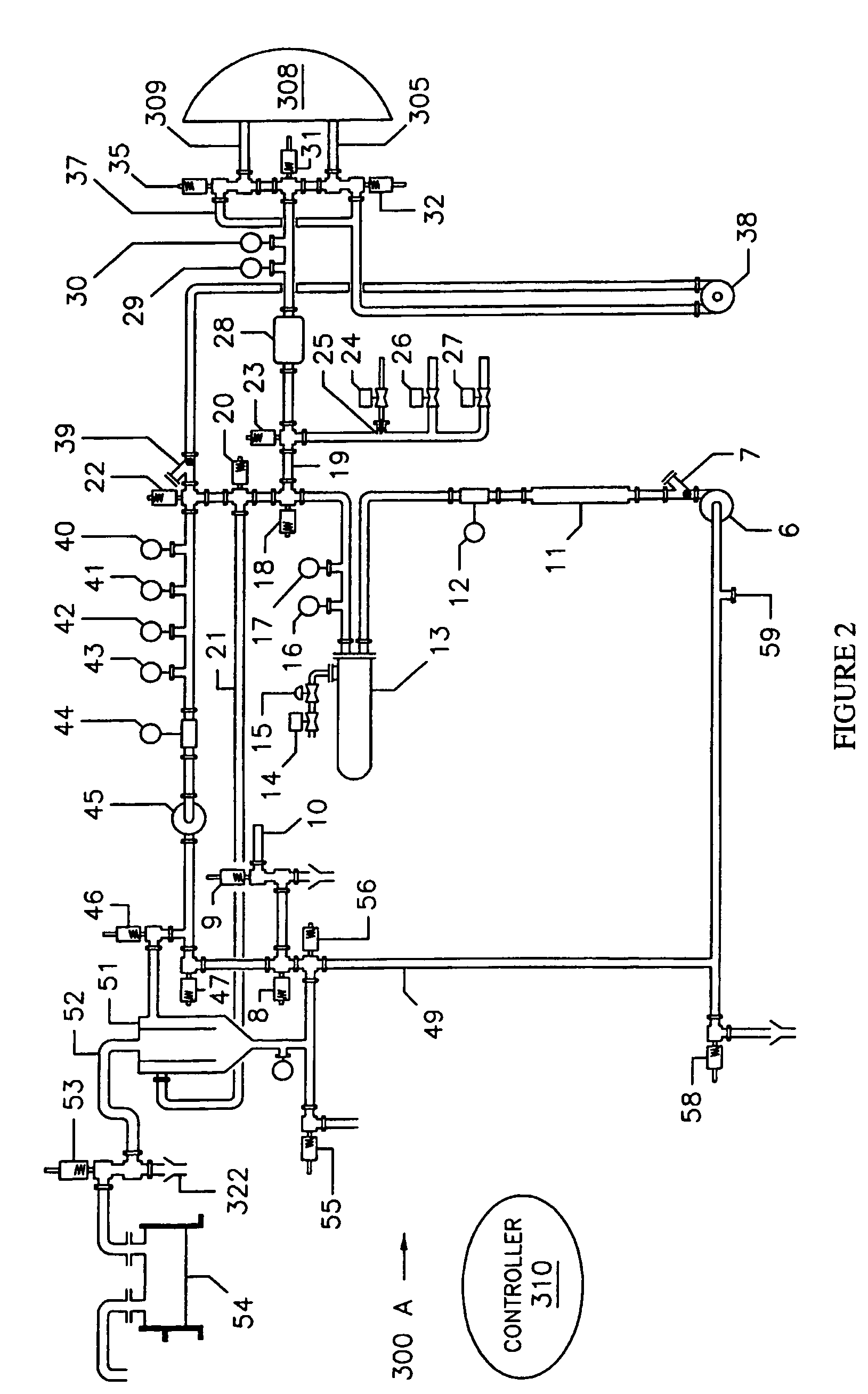Cleaning method and apparatus
a technology of cleaning method and apparatus, applied in the field of cleaning method and system, can solve the problems of still a considerable amount of water used, relatively large amount of water to be used, and relatively large cost, and achieve the effect of less expensive manufacture and maintenan
- Summary
- Abstract
- Description
- Claims
- Application Information
AI Technical Summary
Benefits of technology
Problems solved by technology
Method used
Image
Examples
Embodiment Construction
[0068]The following description often refers to specific types of vessels, such as reservoirs, tanks and silos, among others. The reader skilled in the art will readily appreciate that the use of a specific type of vessel is made for illustration purposes and that in any case wherein a specific type of vessel is mentioned, it is within the scope of the invention to use also any other suitable type of vessel.
[0069]FIG. 1 illustrates in a schematic view an apparatus 300 for cleaning an interior surface of a processing equipment, referred to generally by the reference numeral 302. The apparatus 300 is a so-called clean-in-place apparatus that is permanently, or semi-permanently connected to the processing equipment 302. However, the reader skilled in the art will readily appreciate that the claimed invention is also applicable to apparatuses that are non-permanently connected to a processing equipment to dean.
[0070]The processing equipment 302 includes a first pipe section 305 defining...
PUM
| Property | Measurement | Unit |
|---|---|---|
| internal pressure | aaaaa | aaaaa |
| volume | aaaaa | aaaaa |
| pressure | aaaaa | aaaaa |
Abstract
Description
Claims
Application Information
 Login to View More
Login to View More - R&D
- Intellectual Property
- Life Sciences
- Materials
- Tech Scout
- Unparalleled Data Quality
- Higher Quality Content
- 60% Fewer Hallucinations
Browse by: Latest US Patents, China's latest patents, Technical Efficacy Thesaurus, Application Domain, Technology Topic, Popular Technical Reports.
© 2025 PatSnap. All rights reserved.Legal|Privacy policy|Modern Slavery Act Transparency Statement|Sitemap|About US| Contact US: help@patsnap.com



